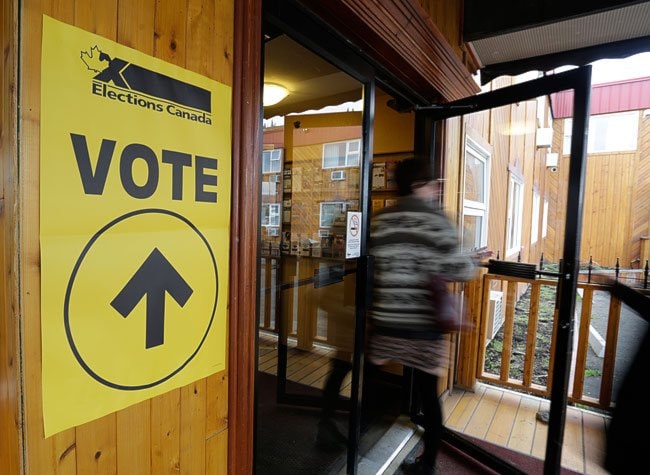The Yukon saw the second-highest voter turnout in the country during Monday’s federal election, with more than three quarters of the territory’s eligible voters casting their ballots.
In total, 19,982 Yukoners voted on Monday, representing 76 per cent of registered electors. That’s up from about 68 per cent in 2011. Only Prince Edward Island saw a higher voter turnout, with 77 per cent of registered voters marking ballots.
Voter turnout spiked across the North during this election. In the Northwest Territories, 64 per cent of voters went to the polls, up from 55 per cent in 2011. And in Nunavut, voter turnout jumped to 62 per cent, from 47 per cent four years ago.
Nationally, voter turnout increased to 68 per cent from 61 per cent in 2011, the highest it’s been since 1993.
It’s an impressive jump, especially considering the concerns raised about voter suppression in the wake of the Harper government’s Fair Elections Act, which included more stringent identification requirements for voters.
Still, poll-by-poll results in the Yukon are not yet available, and it’s hard to know what percentage of the territory’s First Nation population voted on Monday.
Chief Doris Bill of the Kwanlin Dun First Nation said she doesn’t know how many of her First Nation’s citizens voted, but she believes people were engaged. She said she got a call from two people about 20 minutes before the polls closed, telling her they’d been turned away because they didn’t have a proof of address. She issued them a last-minute letter confirming their residency, and she said they were able to cast their ballots in the nick of time.
But overall, Bill said, the First Nation didn’t end up issuing too many residency confirmation letters to people lacking ID. “When it came down to it, people helped other people in the end,” she said.
Kwanlin Dun helped get out the vote by paying someone to drive elders to and from the polls on Monday, Bill said, adding that several citizens also voted in the advance polls.
She said she was pleased with voter turnout across the Yukon.
“I think it means the Yukon is engaged,” she said. “They care about the issues. I think there was a lot of frustration with the current government, and I think they wanted a change.”
Hillary Aitken, program coordinator at the Victoria Faulkner Women’s Centre, said her organization handed out 10 of the 15 free bus passes it received from the city to help people get to the polls during the municipal and federal elections.
“We were really happy to help remove one of the barriers to voting for these women,” she wrote in an email to the News.
But she also said many women who came to the centre were looking for more information about the candidates and how to vote.
Next time, she’d like to work more closely with Elections Canada and maybe have someone present at the centre to provide information.
“It really resonates with people if there’s a face there that they can talk to.”
The Yukon’s election results, which saw Liberal candidate Larry Bagnell cruise to an easy victory, paralleled the results of a mock student vote carried out across the country by the civic education charity CIVIX.
More than 850,000 students across Canada elected a Liberal majority government, with the 1,159 Yukon participants voting in Bagnell as their MP.
Contact Maura Forrest at
maura.forrest@yukon-news.com
